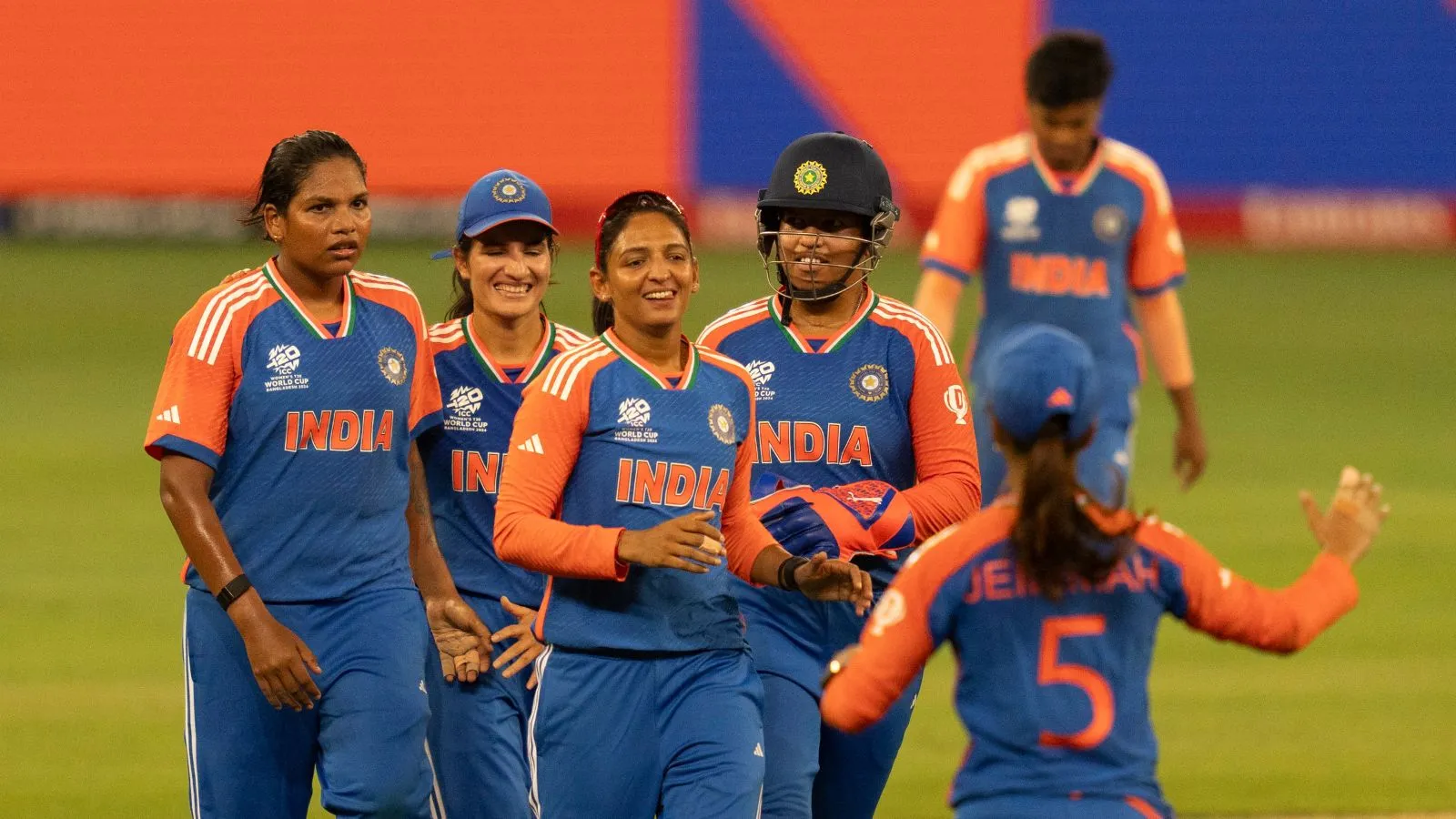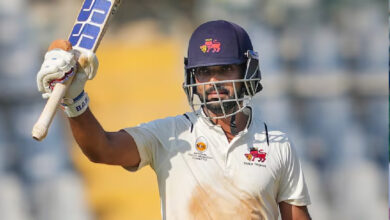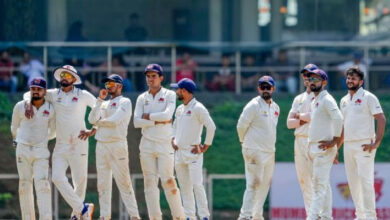Jayanta Talukdar’s journey: From long shot to on the mark

Jayanta Talukdar is talking about the point in his career when, other than his inner circle, almost everyone else stopped believing in him. At first, he says, it was ‘mentally durbing’. That led to a crisis of confidence, which fuelled self-doubt and insecurity. “And then I thought, should I just give up?”
This was nearly three years ago, when the veteran archer was out of the national team. Talukdar has been around long enough to understand the vagaries of sport and an athlete’s constant struggle with form – either to find it when one hits a rough patch, or maintain it when everything’s sailing smoothly.
He’d spent the major part of the previous decade doing the former. Talukdar tried almost everything within his abilities to arrest his slide. But one setback followed another: the inability to make the team for the 2014 Asian Games, the failure to qualify for the Rio Olympics, being unable to get into the team for the World Cups from 2017 and ultimately, in 2019, losing his spot in the Indian team.
Jayanta Talukdar (Express File Photo)
Giving up, at that point, must have felt like an easy and tempting option. Despite the struggles, Talukdar still had a career he could’ve been proud of, having won medals at the World Championships, the World Cups and Asian Championships, competed at the Olympic Games and been a dominant force on the domestic circuit for years.
Call it a sportsman’s pride, the sheer will to prove his naysayers wrong or the burning desire to play for the country again, but Talukdar did not want to bow out when his career had touched nadir. “Deep down, I knew I still had it in me,” he says.
His instinct wasn’t wrong.
Last weekend, Talukdar returned to the national team finishing in the top three during the selection trials held in Sonepat. And after nearly three years of no international competition, his 2022 calendar suddenly looks chock-a-block. For the first time after five years, Talukdar will compete in the World Cup, and in September, he will return to the Asian Games after 12 years.
“After such a long break, returning to the Indian team is not easy,” he says.
Comebacks have been rare in Indian archery, be it an archer who has been sidelined or from the shooting line during important international matches.
Change of guard?
Talukdar is aware of the unforgiving nature of the sport in which the margin of error is very fine. “You need to keep a minimum score of 29 (out of 30) to stay in contention and sometimes, even that’s not enough,” the 36-year-old says. “Shooting a 10 with each of the three arrows from 70m dance… wind plays a factor; technique and timing matter… it’s not easy.”
Indian archers would know. Few sports have, over the last decade or so, generated so much hype but delivered so little at big events as much as archery. In this context, the outcome of the selection trials is eye-catching, not least because of Talukdar’s comeback.
As much as the return of the old guard, it also signals a change, led young archers like 17-year-old national champion Ridhi Phor and two-time youth world champion Komalika Bari. At the same time, some of the established stars, who have consently under-performed at major championships, have been shaken out of their complacency and, at least for now, fallen out of favour with the national team.
And after nearly three years of no international competition, his 2022 calendar suddenly looks chock-a-block. (Photo: Jayanta Talukdar FB )
The biggest casualties are Atanu Das and Deepika Kumari, India’s top-ranked recurve archers. They finished outside the top four and consequently, won’t compete in any of the major events this year. Even their funding under the government’s Target Olympic Podium Scheme has been stopped. “We have nothing left for the remaining of the year,” world number 2 Deepika, who has been a national team regular since 2010, told PTI. “Pura saal chhutti ho gaya hai (we have been left out for the whole year).”
It’s the kind of jolt that could lead to extreme results – former internationals Rahul Banerjee and Mangal Singh Champia, Talukdar points out, got lost during a similar churn a few years ago and are nowhere on the anvil now. Then, there’s Talukdar himself, who was determined not to face the same fate as his two former teammates.
When he lost his spot in the team, Talukdar, after nearly two decades of competing internationally, reinvented himself: introducing wholesale changes to his style and technique, which might be invisible to an untrained eye but have made a gradual impact on his game.
Reinventing technique
It started reuniting with his former coach, Lim Chae Woong. The South Korean had been training Talukdar since 2003 but in 2014-15, he returned to his home country. Coincidently, this also marked the beginning of Talukdar’s slide. Desperate to make amends, Talukdar recalled him to Jamshedpur, his training base, towards the end of 2019. “I was blind to my makes but Lim was able to spot them clearly,” Talukdar says. “So, step–step, we started working on them.”
It began, he adds, lowering the angle of his left shoulder to reduce its stiffness and get a straight posture while releasing the arrow. Corresponding changes were then made to the right shoulder muscles, which had to be relaxed to ensure a smooth release. The next step was to refine the anchor position – that moment just before the shot when the arrow and the string are brought close to the jaw, neck and chin for better aim.
“And lastly, I completely changed the style to draw the bow. Normally, I used to pull it down from up. Now, I keep a straight angle. This is to make sure there is a balance in my shoulder level, once again, to get a better aim,” he explains.
Just when he was building some confidence with his new technique, Talukdar was down with Covid-19 during the second wave last year, with symptoms so severe that he had to be admitted to the ICU. When he returned, the effect was so damaging that he didn’t even have the strength to lift his bow.
“My poundage had reduced drastically – from 44 pounds to 30 pounds. It took around 4-5 months to return to my old poundage,” he says.
As much as physical, it also took a mental toll on him: months before he contracted the virus, Talukdar had suffered a tear in the tendon in his left shoulder. He was still in rehab when he got Covid and once he recovered from the virus and began practicing again, the pain in his left shoulder resurfaced as well.
“All the technical things I was working on … I had to restart. There wasn’t any point in working on technique while I was working with a low-poundage bow. At that time, I was working on my technique, increasing my poundage to pre-Covid levels, undergoing rehab… there was so much happening.”
He endured through all of this, which helped him get mentally stronger as well.
India’s archers have often been found lacking the psychological strength to deal with the pressures of shooting in crunch situations. Talukdar agrees with the diagnosis but believes that without strength and sound technique, mentality means little.
“If I have the power to hold a 44-pound bow without shaking it while aiming, then I can work on technique. But if I don’t have power and my technique isn’t right, no matter how hard I work on the mental side, I won’t succeed,” he says.
So once he regained strength and almost reinvented his technique, Talukdar shifted his focus on the psychological end of things. “I increased the number of arrows I shot every day; from around 200-250 to 400. When you put more hours playing, you get stronger mentally and feel more confident. So that helped.”
He began to rely more on visualisation, a technique that athletes across sports swear . But ultimately, it boiled down to the belief within, he says.
“I feel confident. Earlier, when I went to selection trials, I kept my passport at home. This time, I was sure I would get in so I carried it along,” he laughs.
Soon, it’ll bear the stamps of Turkey, South Korea, France and Colombia, the four countries that’ll host the World Cup series. “It’s been five years since I competed in a World Cup,” he says, the enthusiasm in his voice apparent. “Very few people would have expected me to make this comeback, very few.”







